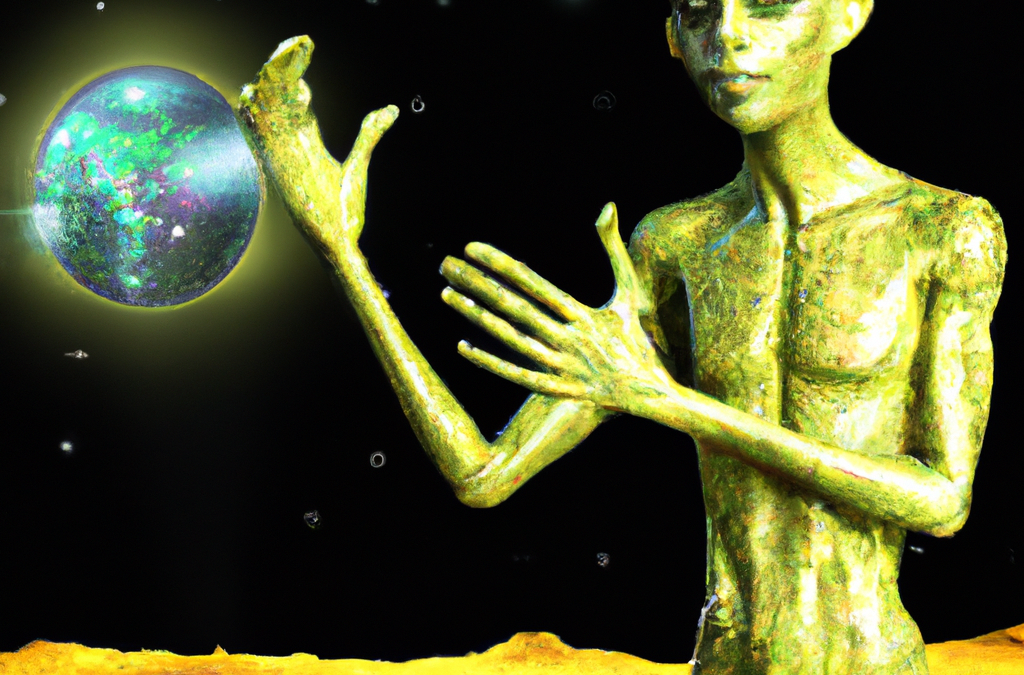“Crypto is decentralizing, AI is centralizing. Or, if you want to frame it more ideologically, crypto is libertarian and AI is communist.” – Peter Thiel

AI-generated image
Produced by DALL-E by OpenAI Labs
Using the prompt:
“Abundance vs. Self-expression”
AI and Crypto are diametrically opposed to each other, yet can complement each other in incredibly useful ways when joining forces. Maybe that’s true of most diametrically opposed forces? That’s a discussion for a different blog post.
Four differentiations to consider:
Control vs. Coordination
- AI is top-down; strongest when information and control are centralized.
- Crypto is bottom-up; strongest when information and coordination are decentralized.
Status Quo vs. Disruption
- AI sustains the status quo and reinforces the strength of existing businesses.
- Crypto disrupts existing business models and helps fringe efforts challenge existing businesses.
Conformity vs. Individualism
- AI reinforces behavior in accordance with accepted conventions or standards.
- Crypto increases privacy and empowers self-sovereignty.
Abundance vs. Self-expression
- AI creates an abundance of media and machine-generated creations.
- Crypto enables self-expression and verifies human identity.
Now that we’ve laid out how they differ, what are some ways they can work together?
Code Creation
Crypto projects – like any software development – rely on well-written computer code. AI is a useful tool for writing computer code. Tool is a key word here. AI is an incredibly powerful tool, but it does not (yet) replace the need for a human to properly utilize the tool.
One major weakness in AI-generated code is security; or a lack thereof. AI is going to suggest methods it finds within its data. As anyone who is one of the billions of people who has had their information compromised thanks to a security breach within a service they use, we know a lot of human-written code is susceptible to being hacked or exploited.
AI can be used to write code, then used to find exploits in AI-written code, then used to fix the found exploits, then be used to test again, and so on. What would take longer? Iterating through this process until the code is secure, or licking a Tootsie Pop until you find the center? Should we ask Mr. Owl?
Deepfakes
AI has gotten really good at generating deepfakes. Crypto (or simply blockchain technology) is being leveraged to create ways to prove authenticity and validate ownership.
Hopefully you’ve heard of Proof-of-Work (PoW) and Proof-of-Stake (PoS)? If not, let us know if you want us to write a blog post about these concepts. But have you heard of Proof-of-Personhood (PoP)? It’s a fascinating topic we can dive deeper into later. For now, we’ll share with you this “What do I think about biometric proof of personhood?” post by Vitalik Buterin, the inventor of Ethereum.
We’d also love to discuss Zero Knowledge Machine Learning (ZKML) Proofs with you, and what they have to do with finding Waldo, but we’ll save that for another post.
Have any topics you’d like to learn more about? Please reach out to us and we’ll research it for you in a future blog post.


